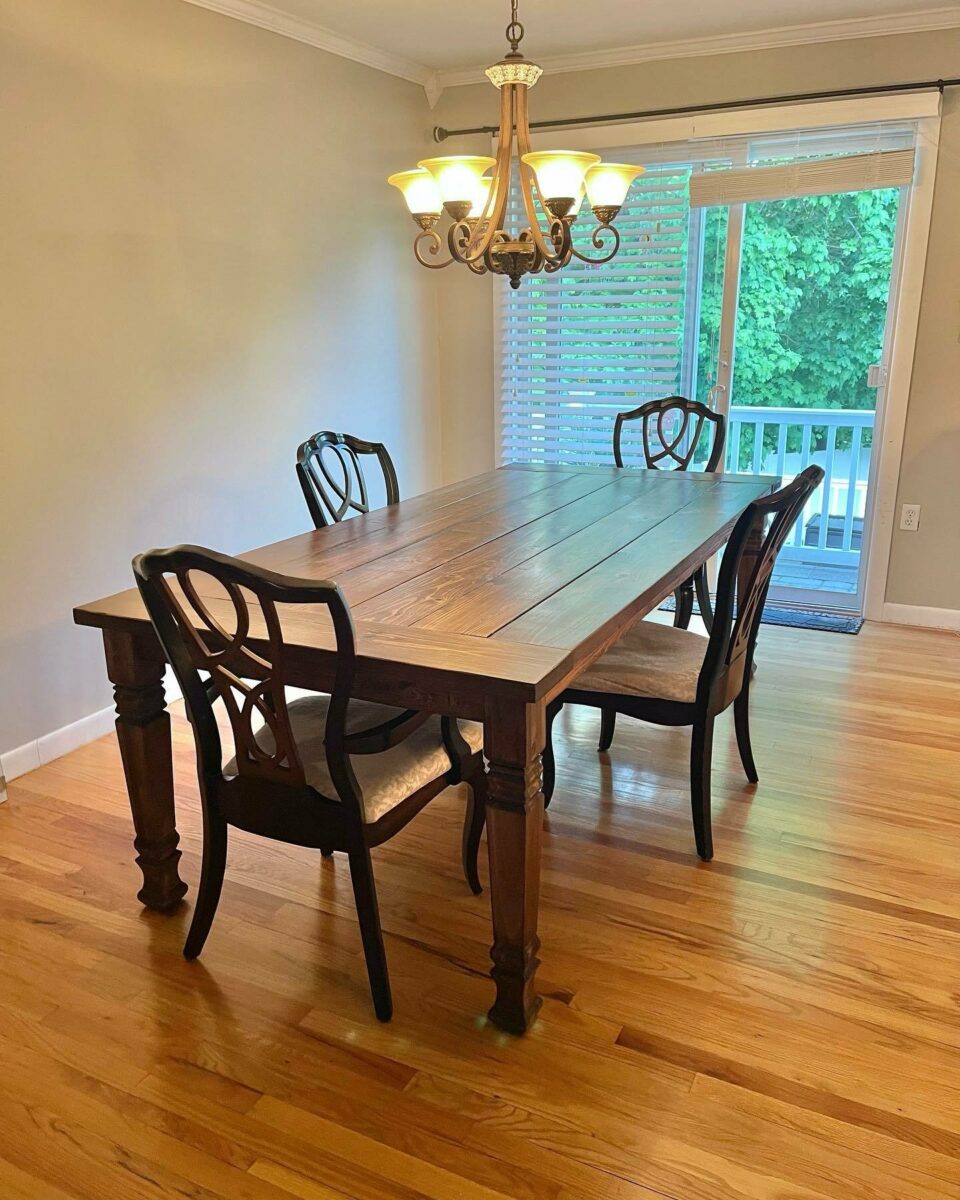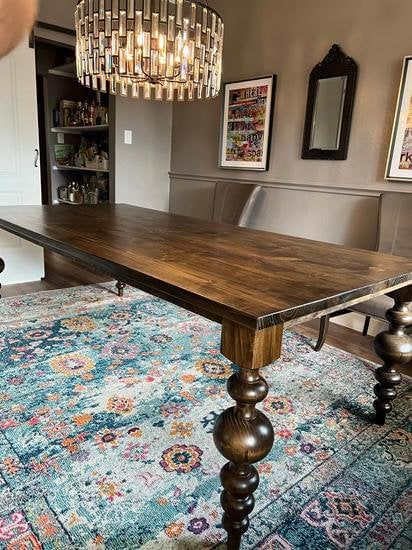The Top Trends in Dining Room Table Legs You Need to Know
The Top Trends in Dining Room Table Legs You Need to Know
Blog Article
From Standard to Modern: Find the Ideal Dining-room Table Legs for Your Style
The choice of dining-room table legs plays a critical duty in specifying the general character of your room, linking the space in between typical craftsmanship and modern-day aesthetic appeals. While timeless styles such as cabriole and transformed legs stimulate a sense of timeless elegance, contemporary designs like hairpin and geometric choices provide a possibility for striking visual rate of interest. Assessing the ideal equilibrium in between these styles calls for a nuanced understanding of your existing decor and individual preference. As you think about these components, the question continues to be: how can you effortlessly integrate these varied leg designs to create an unified dining experience?
Understanding Table Leg Styles
The variety of dining-room table leg designs can substantially influence both the appearances and functionality of the room. Each leg style contributes one-of-a-kind sensible attributes and aesthetic components, dealing with varied layout preferences and use requirements. Understanding these styles is critical for picking the right table that aligns with your overall interior layout vision.
As an example, tapered legs use a clean, traditional appearance that can boost a space's style, while stand bases offer security and maximize legroom, making them excellent for smaller sized spaces. Hairpin legs, a trademark of mid-century contemporary design, present an industrial panache, enabling a ventilated, open feel. In a similar way, trestle legs stimulate rustic charm, offering durable support and a feeling of timelessness.
In addition, the selection of materials plays a substantial role. Wood legs can bring heat and appearance, whereas steel choices often convey a streamlined, contemporary ambiance. Inevitably, recognizing table leg styles is crucial for producing a cohesive eating location that mirrors individual style while ensuring practicality and convenience. By thoughtfully taking into consideration these components, you can enhance both the useful and aesthetic allure of your dining area.
Conventional Table Leg Options
When selecting dining area table legs, typical options commonly symbolize ageless elegance and workmanship. These designs mirror a rich heritage and a dedication to quality, making them suitable for those that appreciate classic aesthetics.
One of the most legendary standard leg styles is the cabriole leg, identified by its elegant curved shape. This style usually features ornamental carvings and is most commonly found in Queen Anne and Chippendale furniture. Another prominent option is the turned leg, which flaunts a series of smooth, rounded shapes that give a traditional appearance while keeping security.
Additionally, the straight leg, while simple, offers a unadorned and durable structure that can blend flawlessly with a range of tabletop styles. For those drawn to ornate detailing, claw-and-ball feet legs evoke a sense of splendour and can work as a magnificent prime focus in any type of eating space.
Finally, pedestal bases, although not purely legs, supply an alternate conventional alternative that permits for adequate legroom and can be magnificently carved. Each of these traditional leg styles contributes to the total setting of an eating area, weding feature with aesthetic charm.

Modern Table Leg Layouts
Modern table leg layouts provide a diverse range of designs that stress clean lines and cutting-edge materials. These layouts frequently prioritize functionality while offering as striking prime focus within an eating area. Minimalist appearances are widespread, with legs crafted from products such as steel, glass, and engineered timber, which add to a modern and airy feel.
One popular style is the hairpin leg, defined by its slender, conical structure that provides stability without frustrating the tabletop (dining room table legs). This style is usually found in mid-century modern furnishings and can easily complement different dining table shapes. An additional trend is the use of geometric forms, where legs may handle unbalanced or angular kinds, adding aesthetic interest and a touch of artistry

Blending Styles for Unique Spaces
Typically, property owners seek to develop special eating rooms that show their individual design by mixing numerous layout components. This strategy enables the consolidation of diverse aesthetics, causing an unified yet unique setting. For instance, matching a rustic wooden table with smooth, modern metal legs can create a captivating comparison that elevates the space's general charm.
Additionally, incorporating vintage table legs with contemporary tabletops can stimulate a sense of history while keeping a modern-day perceptiveness. Such combinations not just showcase private taste however additionally motivate imagination, enabling homeowners to curate a space that really feels both individual and inviting.
Color plays an important role in this mixing procedure; selecting table legs more tips here that complement or contrast with the existing color system can boost aesthetic passion. Whitewashed legs can soften the daring of a dark table surface, producing a balanced aesthetic.
Tips for Picking the Right Legs
Selecting the right table legs is important for accomplishing both capability and aesthetic appeal in your eating room. Begin by taking into consideration the total style of your area. Typical setups profit from legs that feature intricate makings or turned styles, while modern areas may ask for streamlined, minimal designs.
Next, analyze the height and security of the legs. dining room table legs. Typical table vary in between 28 to 30 inches in height, so make certain the legs match this dimension for comfort. Furthermore, robust materials, such as hardwood or metal, can improve stability and durability
Examine the leg shape too-- choices include directly, tapered, or stand layouts. Straight legs Discover More provide a timeless look, while tapered legs can include a touch of style. Pedestal bases offer sufficient legroom and are optimal for smaller sized spaces.
Verdict
In summary, choosing the excellent dining room table legs needs cautious consideration of both contemporary and typical styles. her comment is here By integrating leg design, height, and product with the general décor, a cohesive and inviting ambience can be accomplished.
The selection of dining space table leg styles can significantly affect both the looks and functionality of the room. Ultimately, understanding table leg styles is vital for developing a cohesive dining location that shows individual style while ensuring practicality and comfort.One of the most legendary standard leg styles is the cabriole leg, characterized by its graceful rounded form. Straight legs supply a timeless appearance, while tapered legs can include a touch of sophistication.In recap, picking the perfect eating room table legs calls for careful consideration of both standard and modern-day styles.
Report this page